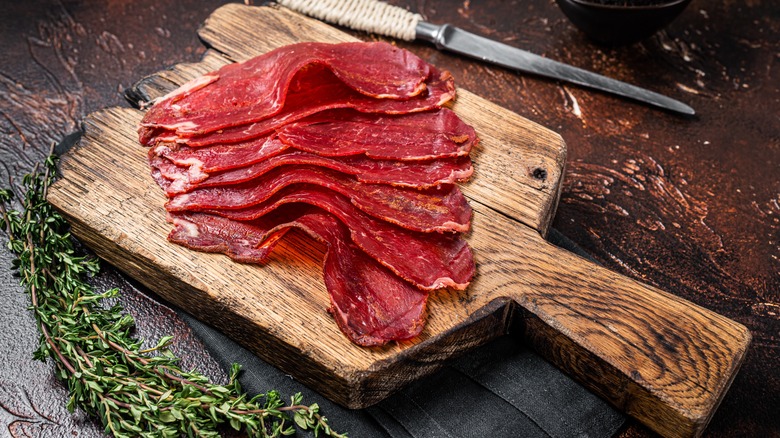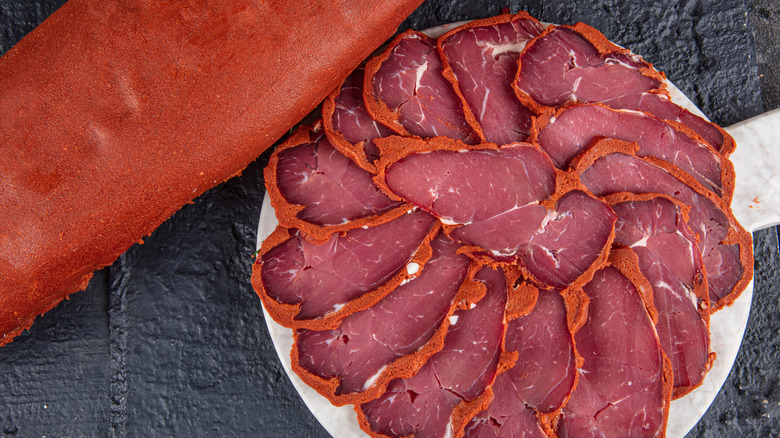The Lengthy Downside To Making Your Own Pastrami
Legendary Broadway playwright Herb Gardner once famously proclaimed, "A man who is not touched by the earthy lyricism of hot pastrami, the pungent fantasy of corned beef...is a man of stone and without heart." It may seem like a lot of hype for pastrami, but if you've ever sunk your teeth into a Reuben sandwich, then you know that the praise is appropriate. Folks have been enjoying pastrami for centuries. It came to the U.S. in the 1800s from the culinary genius of Romanian immigrants, reports Taste. Hundreds of years before that, home cooks of the Ottoman Empire were making a salt-cured version called "pastirma." Anthony Bourdain swore by pastrami — even for breakfast. The chef posted an Instagram photo of a stacked Pastrami Queen sandwich with the caption "Straight off the plane. 10AM. The joys of travel are many, but sometimes there's no place like home."
Jewish delis have established their position of prowess in the culinary world largely in part to pastrami. Larder in Cleveland, OH makes koji-fermented pastrami that very well might change your life. (At least, it'll change the way you think about pastrami forever.) Barney Greengrass holds down the literal and proverbial pastrami fort in Manhattan. Pastrami is the cured, spiced, smoked angel straight out of foodies' wildest dreams, but it doesn't come without work — like, a lot of work. For intrepid, frenetic, masochistic home cooks, it is possible to make pastrami yourself, but there's a lengthy downside.
Buckle in for an entire week
If you do decide to embark on a homemade pastrami voyage, get ready to say goodbye to a full shelf in your refrigerator for the next four days. That means you probably won't be stocking the fridge with groceries anytime soon. Pastrami may be a New York City classic, but if you live in a classic Brooklyn walk-up with two or three (or four) roommates, it's unlikely that a spare shelf is a resource at your disposal in your shared refrigerator. Making homemade pastrami requires three days of soaking in brine in the fridge, says Food Network, plus another day of curing (also in the fridge). Smoked BBQ Source recommends much longer: a full 5-7 day soak in the fridge. Then there's the spice rub. Fans love pastrami for its deep, slow smoky flavor, but that also means you'll have to actively monitor a smoker for up to eight hours — and then, after that, it gets steamed in the oven for multiple hours.
Katz's Delicatessen has been cranking out world-famous pastrami in NYC for over 125 years, and the pastrami-making process takes nearly that long. According to third-generation owner Jake Dell, Katz's pastrami cures for two to four weeks and smokes for two to three days (via Serious Eats). If that sounds like a wicked amount of work, it's because it is. You're better off leaving it to the pros and reaping the benefits for yourself. (Be sure to leave a hefty tip.)

